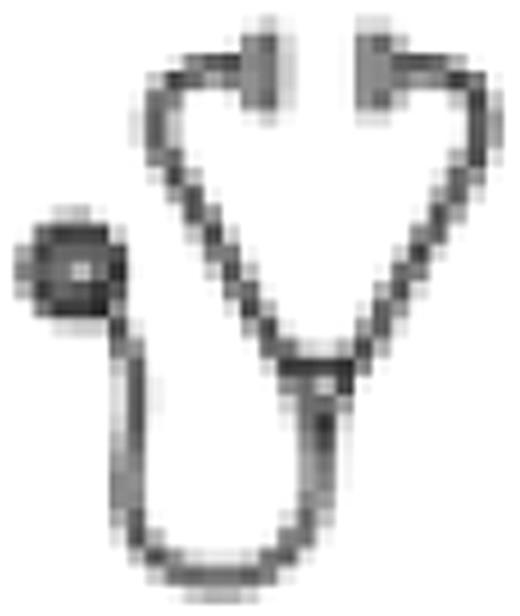Abstract 1041
Several studies suggest that subnormal vitamin D levels may be prognostic in a number of malignancies, including non Hodgkin lymphoma, prostate, breast, colon and lung cancer. However, no studies have evaluated the impact of subnormal vitamin D levels on treatment outcome in AML. Vitamin D levels were evaluated in 97 consecutive newly diagnosed similarly treated patients with AML (excluding AML M3). There were 50 (52%) males and 47 (48%) females with a median age of 60 years (range 19–91). The median white blood cell (WBC) count at diagnosis was 18×109/L (range 0.57–555.23). Karyotype was favorable in 11%, intermediate in 50%, adverse in 23%, of unknown significance in 11% and not available in 5%. A total of 74 patients (76%) had de novo AML. Albumin levels were subnormal (<3.5g/dl) in 33 (34%) patients and normal (≥3.5g/dl) in 64 (66%) patients. Body mass index (BMI) was calculated on all patients, normal weight (BMI 18–24.9) 33 (32%) patients, overweight (BMI 25–29.9) 34 (35%) patients, obese (BMI 30–34.9) 16 (16%) and very obese (BMI ≥35) 15 (15%) patients. Induction consisted of cytarabine (100mg/m2 × 7 days), daunorubicin (90mg/m2 for <60 and 60mg/m2, for ≥60 × 3 days) and etoposide (100mg/m2 × 3 days) (ADE 7+3+3).
Consolidation therapy consisted of either high-dose cytarabine (47%), ADE (5+2+2) (15%), allogeneic (8%) transplantation, or other/no further treatment (30%). The median follow-up was 8.1(range, <1-66) months. Serum samples were obtained at diagnosis and studied for 25-(OH)-Vitamin D levels using radioimmunoassay. Thirty-four (35%) patients had normal vitamin D levels (32-100 ng/mL), and 63 (65%) patients had levels <32ng/ml.; 34 (35%) patients had levels considered insufficient (20-31.9ng/ml) and 29 (30%) patients were deficient (<20ng/ml). We have studied vitamin D concentrations in a cohort of 100 healthy volunteers from Western New York and found a similar frequency of vitamin D serum concentrations subnormal. Complete remission rate was similar in those with normal and subnormal vitamin D levels (50% vs. 57%; P=0.53). In univariate analysis, WBC count ≥100×10
9/L was associated with worse progression-free survival (PFS) and overall survival (OS) [14.3 vs. 2.2 months; 95% confidence interval (CI) 8.9 to 21.9 vs. 0.49 to 5.9 for PFS (P=<0.0001) and 17.3 vs. 2.2 months; 95% CI 13.6 to 24.6 vs. 0.49 to 6.7 for OS (P=<0.0001). Similarly, secondary AML was associated with worse PFS and OS [14.9 vs. 6.3 months; 95% CI 9 to 26.7 vs. 4.1 to 10.1 for PFS (P=0.028) and 18.9 vs. 6.7; 95% CI 13.6 to NA vs. 5.6 to 16.7 for OS (P=0.048)]. In addition, unfavorable karyotype, when compared with intermediate and favorable karyotypes, was associated with worse OS [6.6 vs. 18.9 vs. 21.2 months; 95% CI 4.8 to 16.7 vs. 11.5 to NA vs. 14.2 to NA for OS (P=0.04)]. Interestingly, in this cohort, age affected neither PFS nor OS and karyotype had no effect on PFS. Subnormal vitamin D levels were associated with worse PFS and OS [7.9 vs. 16.5 months; 95% CI 5.0 to 12.8 vs. 14.3 to NA for PFS (P=0.007) and 9.2 vs. 21.2 months; 95% CI 6.6 to 18.9 vs. 16.5 to NA for OS (P=0.01)] (
Figure 1A and B). Nutritional status, assessed by albumin and BMI, did not affect PFS and OS. In multivariate analyses, only vitamin D (P=0.03 and P=0.049) and WBC count (P=0.02 and P=0.02) retained their statistical significance for PFS and OS. In summary, AML patients with subnormal vitamin D levels had significantly inferior PFS and OS compared to patients with normal vitamin D levels. Additional investigations to validate this observation and determine the mechanisms by which vitamin D levels are associated with inferior survival in AML are warranted. If confirmed, studies of the role of vitamin D supplementation in AML patients would be valuable.
Disclosures:
No relevant conflicts of interest to declare.

This icon denotes an abstract that is clinically relevant.




This feature is available to Subscribers Only
Sign In or Create an Account Close Modal